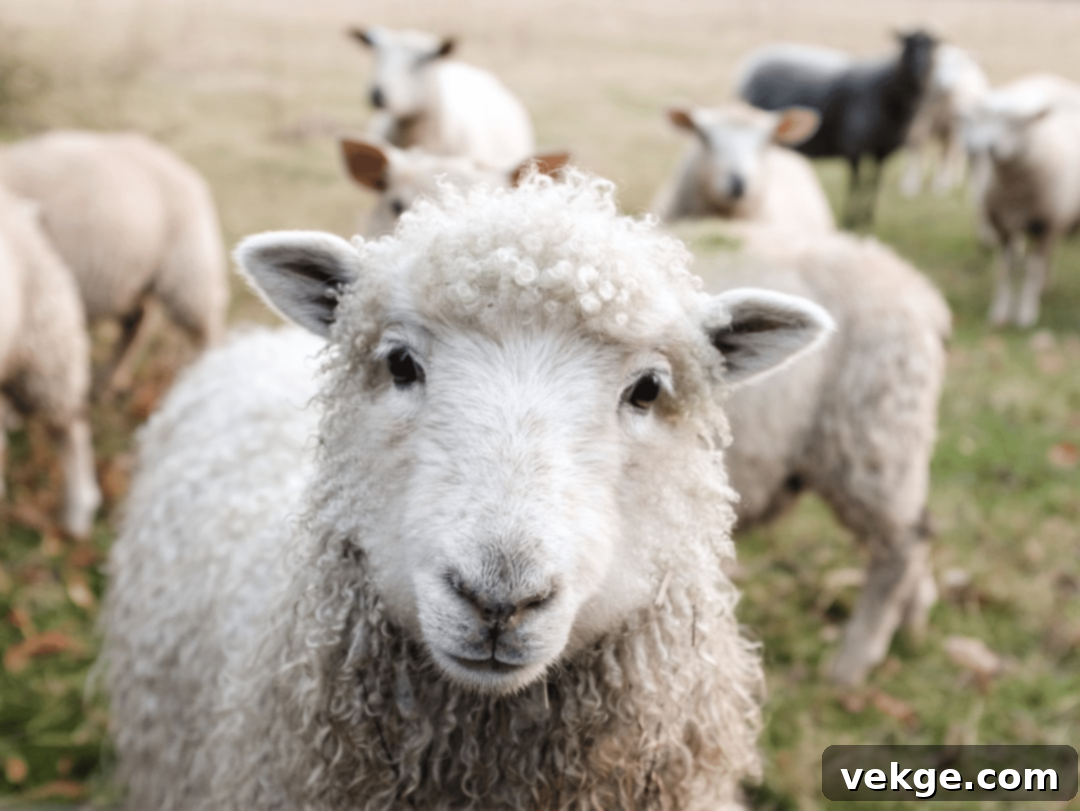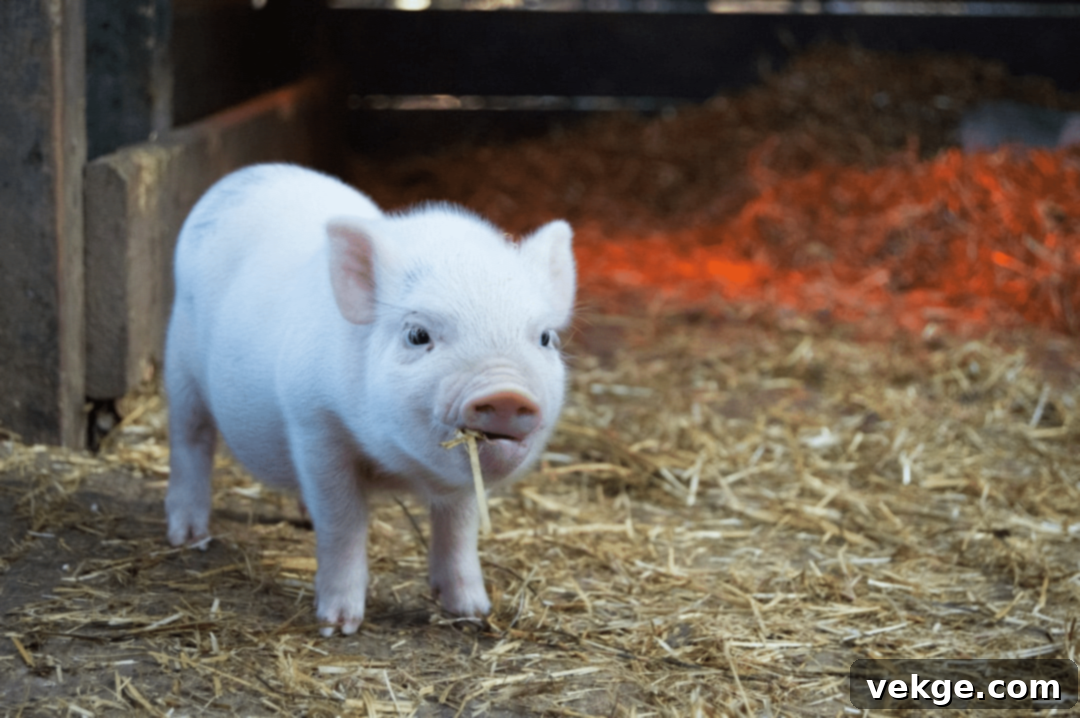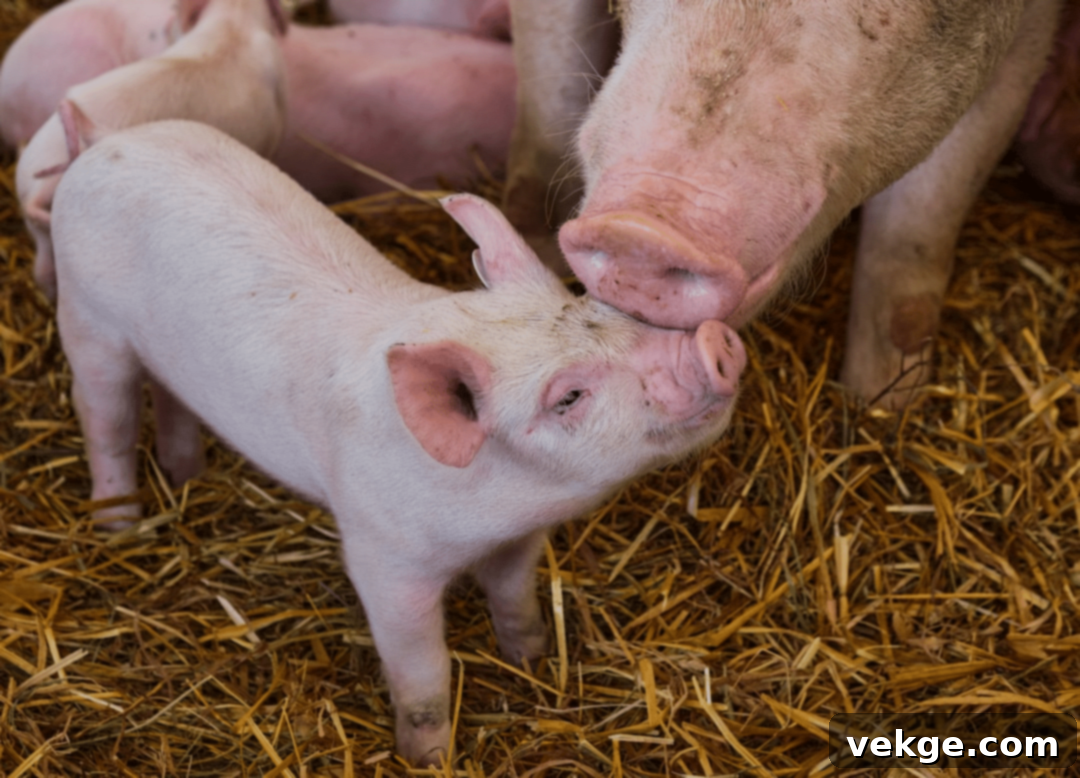From Dream to Reality: Your Essential Guide to Starting a Rewarding Backyard Farm with Animals
The traditional image of a farm often conjures sprawling acres and large-scale agricultural operations. However, a quiet revolution is happening across America, where people are discovering the immense joy and benefits of even small-scale backyard farming. While the number of large commercial farms might be adjusting, the spirit of cultivating a connection with the land and animals is thriving in urban and suburban settings. Starting a backyard farm, complete with happy animals, is no longer a far-off dream but an achievable and deeply rewarding reality for many. With careful planning and a compassionate approach, you can transform your backyard into a vibrant mini-farm, bringing a unique sense of purpose and connection right to your doorstep.
Embracing backyard farming is more than just a hobby; it’s a lifestyle choice that fosters self-sufficiency, sustainability, and a deeper appreciation for nature. Bringing animals into your backyard not only allows you to provide a safe, kind, and loving home to creatures in need, but it also enriches your family life in countless ways. We wholeheartedly recommend exploring local farm rescues or animal shelters in your area. Providing a forever home for an animal that truly needs one is an incredibly fulfilling experience. These extra family members will bring immeasurable joy, laughter, and a profound sense of connection to your daily life, making your backyard a true sanctuary.
Transforming Your Backyard: Essential Tips for Beginning Farmers
Embarking on your backyard farming journey can seem daunting, but by focusing on key areas, you can create a successful and harmonious environment for both your family and your animals. Here are some essential tips to guide you.
Tip 1: Accessorize Your Chicken Coop for Optimal Comfort and Safety
For many aspiring backyard farmers, chickens are the ideal starting point. They are relatively easy to care for, provide fresh eggs, and offer endless entertainment. A well-equipped and thoughtfully designed chicken coop is paramount to ensuring your flock’s health, happiness, and safety. Investing in the right accessories for your chicken coop can make a significant difference in your daily routine and your chickens’ well-being.
The Convenience of an Automatic Chicken Coop Door
One of the most valuable additions to any chicken coop is an automatic door. This innovative device revolutionizes your daily routine by eliminating the need to manually open and close the coop door at dawn and dusk. For individuals with demanding schedules, juggling work, family commitments, and personal hobbies, it’s all too easy to forget to let your chickens out for their morning forage or, more critically, to secure them safely inside for the night. An automatic door solves this problem entirely. You can program it with a timer to open and close reliably, ensuring your chickens are protected from predators during the night and free to roam and forage during the day. This not only offers unparalleled convenience but also provides invaluable peace of mind, knowing your flock is always secure.
Standard Features of a High-Quality Chicken Coop
Beyond the automatic door, most premium chicken coops come with a suite of standard features meticulously designed to provide a comfortable and secure habitat for your feathered friends. These include:
- Durable Roofing (e.g., Shingles): A robust roof, often made with weather-resistant shingles, is crucial. It protects the coop’s interior from rain, snow, and harsh sunlight, maintaining a dry and safe environment essential for chicken health.
- Convenient Entry/Exit with Ramps: A well-designed chicken door, often paired with a gentle ramp, allows your chickens easy access to and from the coop. This smooth transition minimizes stress and makes daily movements effortless for the birds.
- Optimal Ventilation: Proper airflow is vital for a healthy coop environment. Good ventilation prevents the build-up of ammonia fumes from droppings, reduces humidity, and ensures a continuous supply of fresh air. This helps prevent respiratory issues and keeps the coop cool in warmer weather.
- Secure Latches and Predator Protection: High-quality coops feature sturdy latches and reinforced construction to deter common predators such as raccoons, foxes, and hawks, ensuring your flock’s safety overnight.
- Nesting Boxes: Dedicated, private nesting boxes encourage hens to lay their eggs in a clean, accessible location, simplifying egg collection.
- Roosting Bars: Chickens instinctively roost at night. Providing elevated roosting bars allows them to perch comfortably and securely, which is crucial for their natural behavior and sense of safety.

Image credit: Sam Carter
Tip 2: Provide Ample Room to Roam Safely and Freely
Even if you’re establishing a backyard farm in a smaller footprint, ensuring your animals have sufficient space to explore, exercise, and express natural behaviors is critical for their well-being. While allowing animals to roam freely throughout your entire garden might seem appealing, it can lead to unintended consequences. Many animals can cause significant damage to delicate plants, contaminate patios and decks with droppings, and wreak havoc on meticulously maintained raised garden beds. To strike a balance between animal welfare and garden preservation, creating a dedicated, secure animal run is an excellent solution.
Designing a Safe and Enriching Outdoor Space
Every responsible backyard farmer wants to create a fun and safe outdoor area for their animals. At a minimum, your animal run should provide essential shelter from the elements – harsh sun, driving rain, and strong winds. It should also be situated on well-drained ground to prevent muddy, unsanitary conditions, which can lead to health problems for your animals. Integrating compost piles within the run is an ingenious way to manage animal waste efficiently. The animals will naturally turn and aerate the compost, mixing manure with other organic materials, which significantly enhances the fertility of the compost for your garden.
Maintaining a Clean and Healthy Run Environment
To keep the ground within the run clean, dry, and free from pests, covering it with a layer of suitable bedding material is highly recommended. Cedar shavings are a popular choice due to their natural insect-repelling properties, helping to reduce mites and flies. An added bonus is the pleasant, fresh aroma cedar provides. Regularly replace the cedar shavings every few months, or more frequently if necessary, to maintain hygiene. For chicken coops, refreshing the straw bedding twice a year is a good practice – once in early fall to prepare for cooler months and again at the end of winter. In the fall, laying down thick pads of fresh straw encourages natural foraging behavior; chickens will spend the winter months happily picking through it in search of seeds and bugs. This activity keeps them entertained, reduces boredom, and consequently lessens tendencies towards pecking at each other.
Enhancing the Run for Animal Well-being
Consider adding elements that enrich your animals’ lives. For chickens, this could include dust bath areas (a shallow container of sand or fine soil), sturdy perches, or even simple swings. For other animals, enrichment might involve logs to climb, areas for digging, or foraging opportunities. The goal is to create an environment that encourages natural behaviors and keeps your animals mentally and physically stimulated.

Image credit: Christopher Carson
Tip 3: Thoughtfully Choose the Right Animals for Your Backyard Farm
The decision of which animals to welcome into your backyard farm is one of the most exciting, and critical, steps. Your primary goal should be to provide a loving and responsible home, so consider animals known for their friendly, social nature and suitability for your specific environment. This journey begins with thorough research and understanding local regulations.
Navigating Local Ordinances and Regulations
Before bringing any new animals home, it is absolutely vital to check your local ordinances and zoning laws. Different municipalities have varying rules regarding which animals are permitted in residential areas, the maximum number allowed, and specific housing requirements. Failure to comply can lead to legal issues, fines, and potentially having to rehome your beloved animals. When speaking to city or county officials, ask specific questions about:
- Permitted Species: Which types of animals (e.g., chickens, ducks, rabbits, goats, miniature pigs) are allowed?
- Quantity Limits: Is there a maximum number of each species you can keep?
- Housing Requirements: Are there specific setback distances from property lines for coops or enclosures? Are there material requirements for structures?
- Noise and Waste Management: Are there regulations concerning animal noise (e.g., roosters often prohibited) or specific requirements for disposing of animal waste?
- Permitting Process: Do you need to apply for any special permits or licenses?
Assessing Your Available Space
The physical space you have available will significantly influence your animal choices. A starter flock of backyard chickens might require relatively little ground space, but they still benefit from a secure run. Larger animals, such as miniature goats, sheep, or even miniature pigs, will need considerably more room to roam, graze, and exercise. If your outdoor space is limited, consider smaller-to-medium-sized animals that can thrive in a more confined area, such as a few laying hens, ducks, rabbits, or dwarf goats. Remember to think about vertical space for climbing and roosting, not just horizontal footprint.
Understanding the Time and Financial Commitment
Raising animals requires a substantial, ongoing commitment of both time and financial resources. The more animals you have, and the larger they are, the more time you will need to dedicate to their care. Daily tasks include feeding, providing fresh water, checking on their health, and cleaning enclosures. Weekly or monthly tasks might involve deeper cleaning, bedding replacement, and health checks. Be brutally honest with yourself about how much time you can realistically spend each day on animal care. Furthermore, consider the financial implications: initial setup costs (coops, fencing, feeders), ongoing expenses for quality feed, bedding, and supplies, and crucially, veterinary care. Animals can get sick or injured, and having a budget for emergencies is essential for responsible animal ownership.
Considering Climate and Companionship
Your local climate can also play a role in animal selection. Some breeds are more tolerant of hot or cold weather than others. For example, certain chicken breeds are hardier in winter. Finally, reiterate the importance of companionship. If you’re looking for animals that will interact more closely with your family, consider breeds known for their docile and friendly temperaments. Many farm animals are highly social and thrive on interaction, making them wonderful additions to a family setting.

Image credit: Bill Fairs
Ready to Cultivate Your Perfect Backyard Farm Lifestyle?
Embarking on the journey of backyard farming is a step towards a more sustainable, connected, and fulfilling life. It’s about nurturing both the land and the animals, creating a sanctuary where you can thrive. At A House in the Hills, we understand the allure of escaping the urban rush and finding peace amidst nature. Our unique community offers hillside homes that are thoughtfully designed to harmonize with the natural landscape, providing the perfect canvas for your mini-backyard farm dreams. Imagine waking up to breathtaking views and stepping into a vibrant outdoor space shared with your beloved animals.
Discover more about our exquisitely crafted homes and the unparalleled tranquility awaiting you in our community. Find your ideal home where sustainable living and natural beauty converge today.
